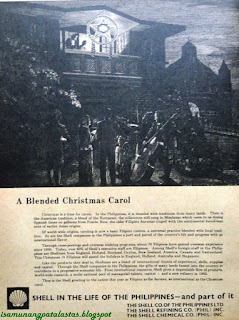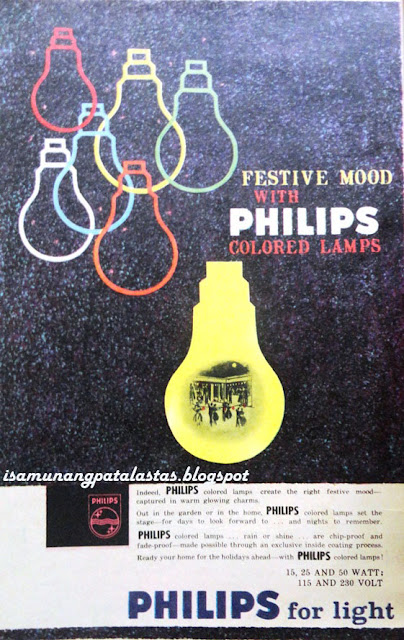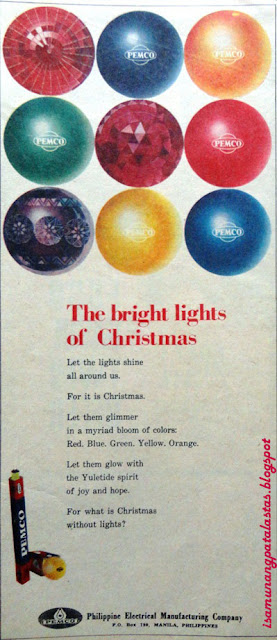 |
| RIZAL SURETY & INSURANCE, Print ad. July 1946. |
In observance of Rizal Day this December 30, let us take a
look at the role the national hero has played in the marketing of consumer goods,
products and service. Dr. Jose Protacio Rizal, has been immortalized in
monuments, schools, streets, avenues and stamps, and his noble qualities extolled in songs and books.
 |
| RIZAL KEROSENE, Print Ad, 1957 |
These same sterling qualities—like loyalty, patriotism,
steadfastness, nationalism—have also made him a perfect posthumous "celebrity endorser" of
various products and institutional services, as these print ad shows:
 |
| RIZAL COMMERCIAL BANKING.1964. |
Rizal has also inspired manufacturers to name their products
after him, in the hope of winning national attention like the iconic hero. Over
the years, there have been Rizal brands of cement, matches, banks, insurance
companies, kerosene and softdrinks. In more recent times, Rizal has also lent
his name and image in pop culture products, and at least one music band has
adopted his name.
 |
| RIZAL SOFTDRINKS, Malolos, Bulacan. Another aerated soda brand was manufactured in Iloilo. PHOTO: Dekada Collectibles. |
There are acts prescribing the code of national symbols like
our flag, coat-of-arms and anthem, but only general advertising standards with
regards to respect for country, religion, culture, symbols and traditions. Rizal—because
of advertising media—is remembered not just as a national hero, but also as a
brand of matches and cement. How’s that for brand recall?
 |
| LA FLOR DE MANILA (Cigars), RIZAL MATCH, RIZAL CEMENT, RIZAL UNDERGROUND (music band), RIZAL MUG (Team Manila Design) |





















